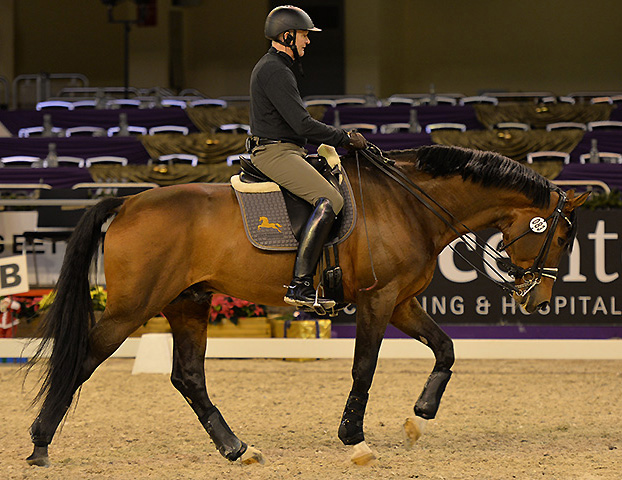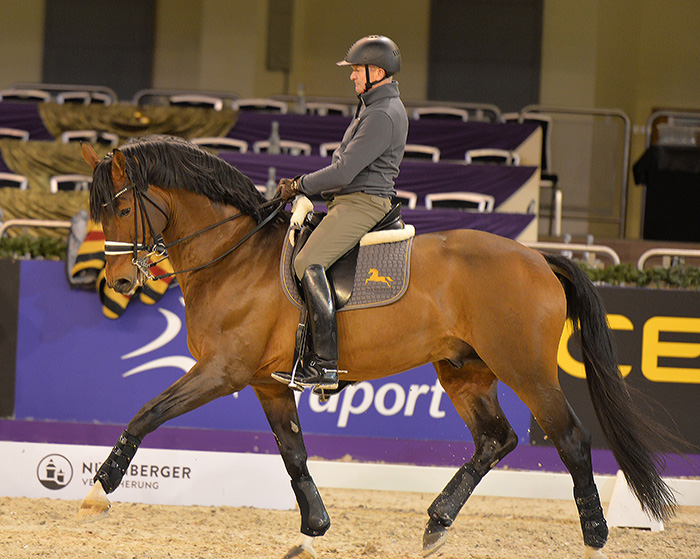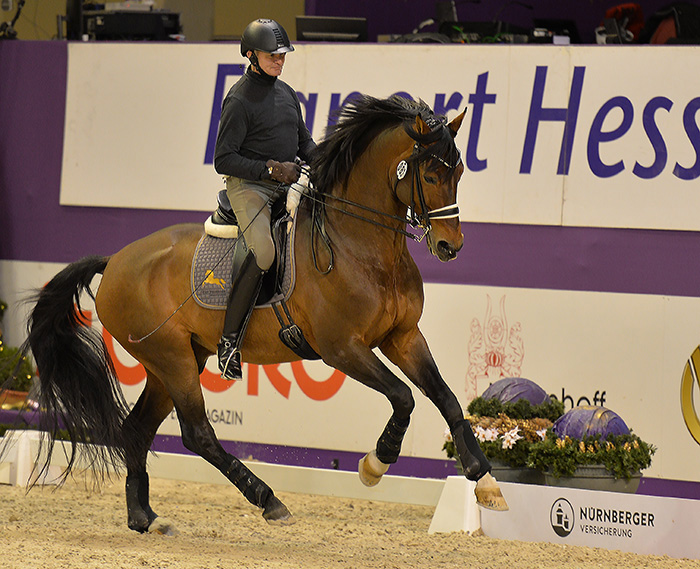Chris Hector talks with German Riding Master, Hubertus Schmidt:
When you started riding this morning, you had his nose just behind the vertical, and there are people who would say, oh look rolkur, but it is nothing like rolkur…
“It’s totally different. That was at the very beginning, and I made the horse very long and low in the neck. It was the same when you came here 20 years ago, I don’t start to collect before the horse is stretching forward and down into the bit.
Not every horse that is forward and down is loose in the back, but if the horse is not stretching, he is not loose and forward. I want to be able to get them forward and down, dressage is also gymnastic, so at first I had to get him a little bit round to get him low enough in the neck, and as soon as he is low enough, then I let him out again. At first he was a bit too high for me, so I had to have him a little shorter in the neck to get him lower in the neck, and as soon as he gets low, I let him out. That is the second step.”
“If I can’t get him immediately low and out, then I have to make this compromise, and if I can’t get him low enough with his nose in front of the vertical, then I make him a little bit shorter in the neck, then low in the neck, then in the second step, I take him out.”
“If they are a little bit stiff, you have to bend them sideways and again a little shorter in the neck, but what is important is that I can be soft after that.”
“It is the same as later on in the collected work. If the horse gets a little too strong, too much against the hand, I have to make him a little shorter in the neck, also if they are a little bit stiff, you have to bend them sideways and again a little shorter in the neck, but what is important is that I can be soft after that. It is the most important part of this philosophy, to make and keep them light.”





